AGGRESSIVE DOG TRAINING
Here at Tip Top K9 we have worked tons of aggressive dogs. From German Shepherds to Pit Bulls to Rottweilers to Great Danes and even Golden Doodles! Some are territorial, some are possessive of toys or food, some very fearful, some attack people, some attack dogs, some attack anything and everything.
Training aggressive dogs and hard to control dogs is one of our specialties and this page will go into more details on the types of aggression that see and how we approach it. If you have an aggressive dog training need then you have found the right place!
Dog Aggression is SERIOUS BUSINESS!!
Below we will explain each type of aggression in more detail and our approaches. Please keep in mind that if your dog is showing signs of aggression the earlier we are able to address it the better. The longer you wait to address aggression the worse it will become and the harder (and more expensive) it will be to get under control.
If your dog is showing ANY signs of aggression schedule your first lesson and meet with a dog trainer today for only $1.00!
There are three main sources of aggressive behaviors:
Learned Behavior
Genetic Linked Behavior
Protective Behavior

Learned Behavior means any response to a stimuli that dog uses in order to get its way.
I.E. the cute Pomeranian does not want to get off the sofa so nips and bites mom when asked to get down. In doing so the cute pup learns that she can get her way by a show of aggression.
While this may seem cute if you let this happen for 3-4 more years this dog will slowly progress to the point where they will bite for real because they are now very confident that being aggressive will yield them good results!
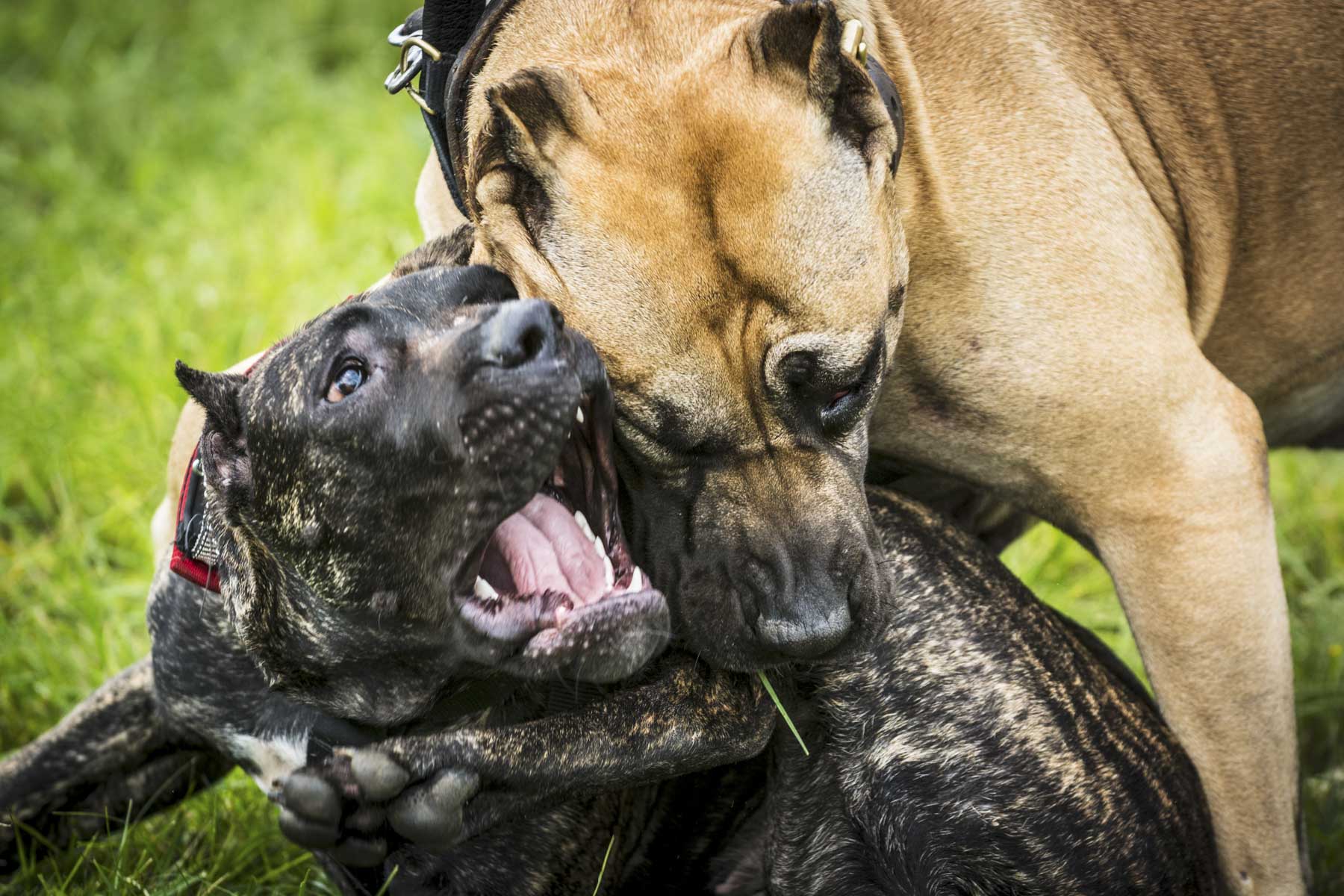
Genetic Linked Behavior means that your dog’s aggressive behavior has been somewhat hard wired in by the DNA passed on from mom and dad and regardless of what you do there will still be some aggression present.
Some dogs are born pre-disposed to be more human or dog aggressive based on how their prior generations were bred.
Dog’s like this can still be helped tremendously but the aggression is never truly resolved.
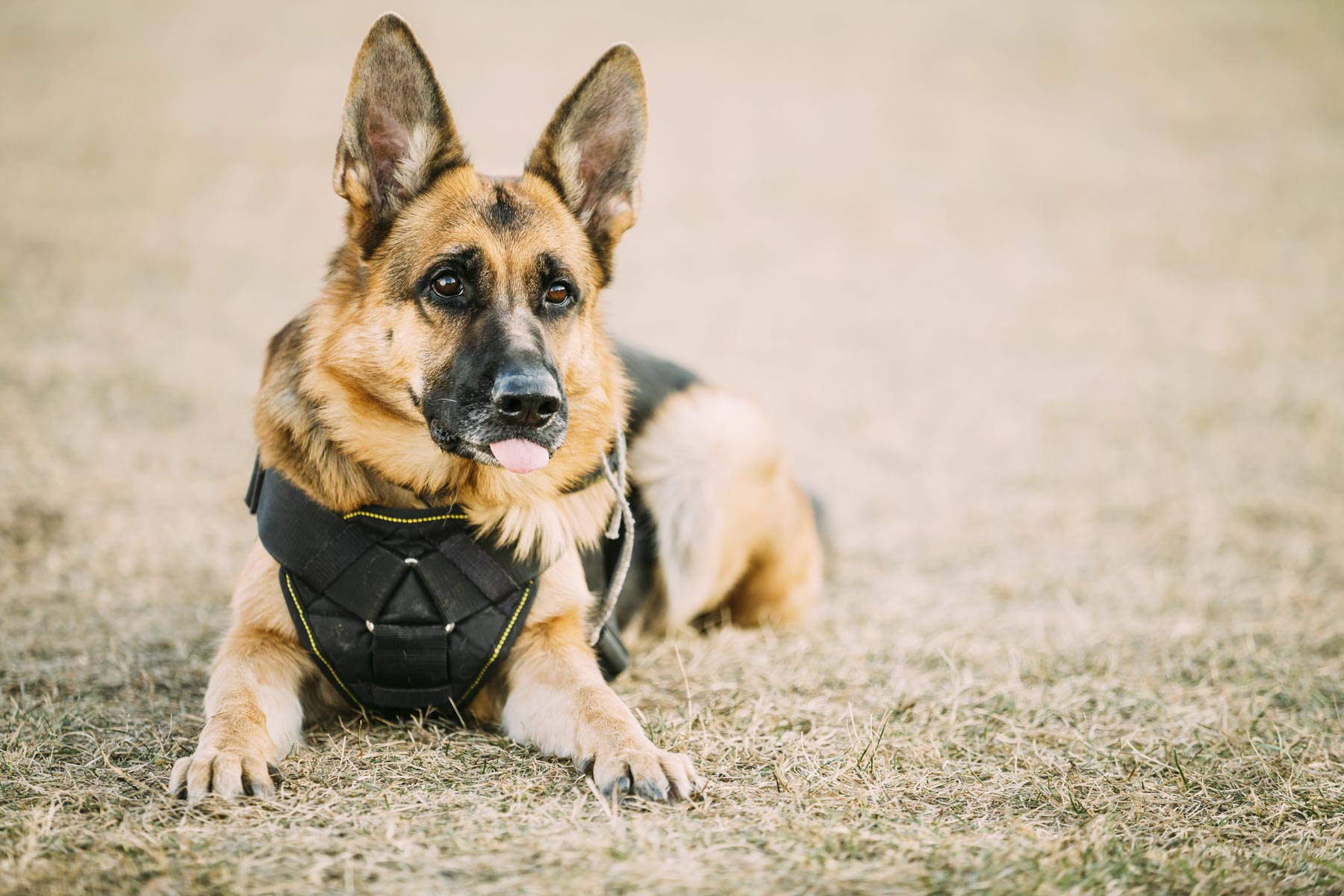
Protective Behavior is the need to guard and protect the yard, a house, a person or a resource.
As far as our dog trainers are concerned having a dog that guards the house or protects you is not a bad thing. What we have to figure out when we meet your dog is wether or not your dog is picking up on your anxiety and feels the need to guard you in certain situations. OR is your dog truly human aggressive or dog aggressive and needs help.
If you are unsure why your dog is being truly aggressive this is something we can evaluate at our initial $1.00 Lesson.
Fixed vs. Controlled Aggression
Fixed
Fixed means that the aggressive behaviors are well… FIXED!! This means we were able to teach your canine companion that those aggressive behaviors that they are engaging in are no longer appropriate and give our client(s) the tools to continue to reinforce the new boundaries.
What happens is your dog, being a pack animal, falls in line with your new rules and no longer exhibits those behaviors as they now understand that their leader has prohibited them. While results can be seen in as quickly as a week or two aggression can take anywhere from a week to 2-6 months of reinforcement to truly fix.
If your dog has been exhibiting aggressive behaviors for 2 years then 2 weeks of not exhibiting them isn’t going to fix the issue but it will start to get the aggression under control and curb it for sure! Some dogs that have had issues for awhile take longer periods of reinforcement and some issues (depending on their source) will never truly go away 100%.
Controlled / Managed
Controlled or Managed aggression means that we have taught your dog the behaviors we would like to see and what is no longer allowed. Your dog understands right from wrong behavior but the dog’s drive for the certain behavior is so strong that it will not exhibit self control unless its leader is right there forcing it to (i.e. unless you are “Controlling” or “Managing” your dogs behavior.)
In these instances the dog is normally older than 5 years old and has engaged in the aggressive behaviors for over half their life or is genetically predisposed to act a certain way wether that means to guard the house or guard mom and dad or the dog is animal aggressive as it came from pit bull fighting lines or whatever the case may be.
With older dogs we never truly know if we can 100% fix issues or can just get better control. Most dogs have to be controlled and managed through situations for a period of time and some are never 100% trustworthy but you have to remember dogs cannot be reasoned with! At their core being they are still animals, while civilized and identified as children they still have a primitive nature that cannot always 100% be overruled.
A Practical Example in Behavioral Issues:
Fixed Behavior
Little Richard used to eat cookies before dinner but now doesn’t eat cookies before dinner because he knows mommy doesn’t allow it!
Little Richard knows right from wrong, he knows that he will disappoint mom if he misbehaves and he also knows that there is consequences that he does not want so he does not eat cookies.
Controlled / Managed Behavior
Little Johnny knows he should not eat cookies before dinner and he knows that if he does he will get in trouble.
BUT if mommy leaves the room and is not watching him then Little Johnny will run for the cookies and eat them as fast as he can and will hope he does not get caught!!

The difference in these two examples depends on the child. If the little kids drive is high enough for cookies he may risk upsetting mom and getting a time out or spanking if he values the cookies enough.
As humorous as this may seem this is how dogs are. Most dogs are mentally and emotionally the same as 4-5 year old children. Some 4-5 year old children are more obedient than others and some are more strong willed, but at the end of the day they are all children and still need some parental guidance to some degree to help them make good decisions until they are able to make good decisions on their own which for some dogs never happens as they do not keep maturing mentally and emotionally like children do.
Types of Aggression Our Trainers Help With:
People Aggression
When a dog shows aggression to people.
It is time to be concerned when your dog uses aggression or a show of aggression as their normal way to handle social interactions with people and as a way to avoid contact with new people and even with children.
We see many dogs that if you were to ask them they do not even know the root of their behaviors but they engaged in aggression and liked the response or the feeling they got and it got reinforced.
Dog Aggression
When a dog shows aggression to other dogs, specifically when unprovoked and at a distance.
It is time to be concerned when your dog uses aggression or a show of aggression as their normal way to handle interactions with other dogs or will go after other dogs unprovoked.
Much of the dog aggression we see falls into the “Controlled/Managed Category” and not “Fixed” as much of it can be rooted in past trauma or genetically based.
Fear Aggression
When a dog is scared of other dogs and/or people and will be aggressive to make people or dogs leave them alone.
It is time to be concerned when your dog is showing teeth, growling or biting out of fear to manipulate their environment and make a “perceived threat” go away and the threat is a very nice, non-threatening person or very nice, non-threatening dog.
Dogs with extreme fear can be some of our hardest cases to work but we really do see a lot of dogs overcome their fears and be able to handle daily life so much better!
Dominance Aggression
When a dog shows aggression as a means of controlling and dominating others and and/or getting their way.
This is normally seen in very big and strong, highly dominant dogs (Rottweilers, Akitas, Wolf Hybrids, Alaskan Malamutes) but can be seen in smaller breeds too.
Resource Guarding
When a dog will guard any item with their body and presence such as food or a bone or a toy and then will growl, snap or bite to guard that item from anyone taking it.
Resource guarding can be learned behavior or can be genetically based in some breeds but we still have a very exact way to work through these challenging behaviors.
Food Aggression
This is where a dog will bite people or dogs over food.
Food aggression is similar to resource guarding but generalized to just food With strict obedience we can get good results quickly with most food aggressive dogs UNLESS they were long time street dogs or feral dogs that were constantly starving and on the hunt for food, with these dogs it can be very, very challenging to get past their scarcity mindset.
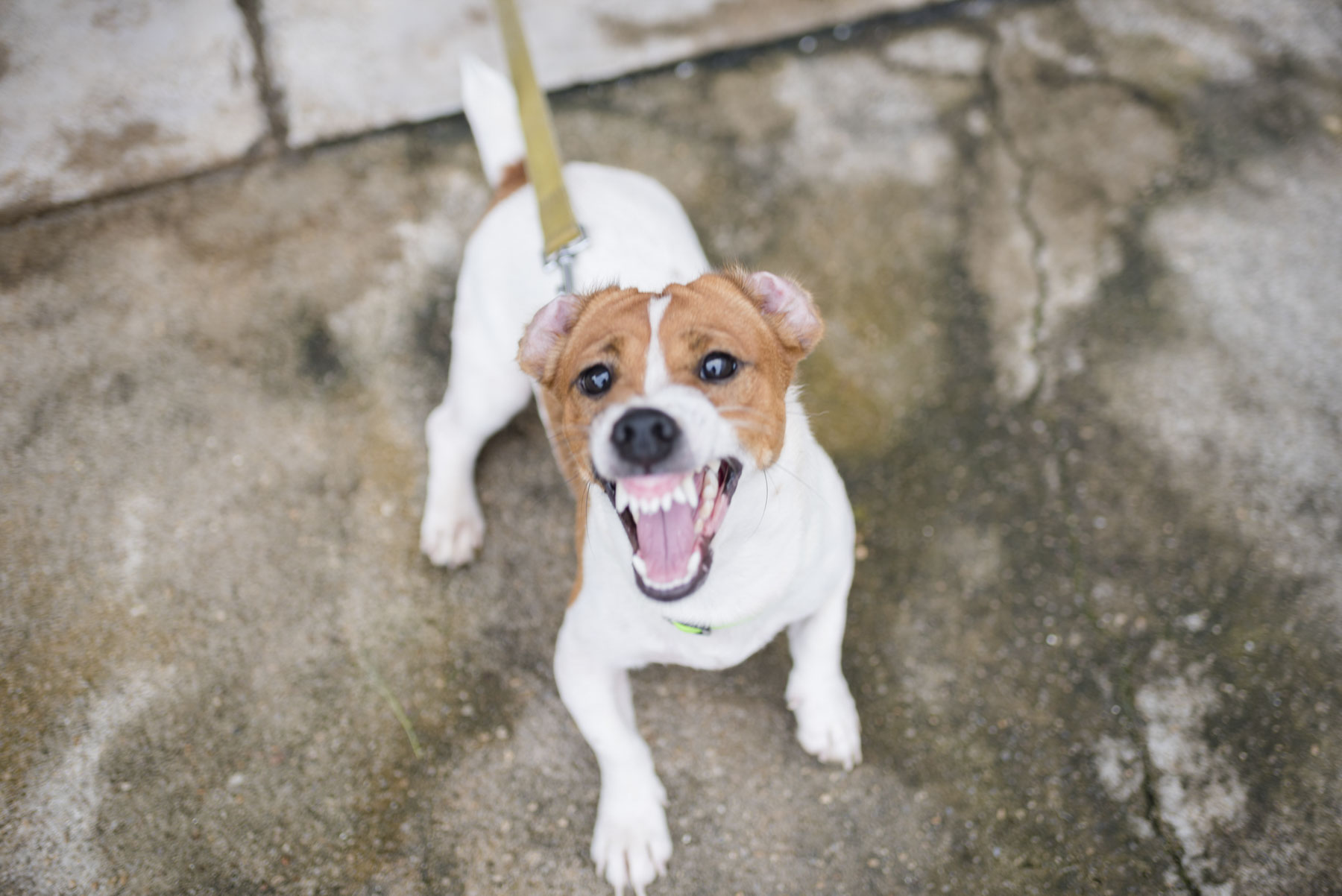
Aggressive Dog Training 101:
To handle the majority of these types of aggression we need four VERY solid commands that our dog does 100% of the time, no matter what is going on and no matter who is around!
1. Come - 100% Of The Time
First, if we train your dog to “Come” 100% of the time we can call them away from any dangerous situations.
2. Place – Doggie Time Out
Second, we train your dog to “Place” so we can control your dog and teach them how to more appropriately handle uncomfortable situations.
3. Quiet – Stop Barking / Growling
Third, we teach a “Quiet” command to stop any aggressive barking or growling.
4. Off - Leave It / Ignore
Fourth, we teach an “Off” command to redirect your dog from giving the “stink eye” or making aggressive eye contact.
This might sound impossible for some dogs but we can reliably do this in 2-4 weeks with most dogs and get them to “Come”, “Place”, “Quiet”, and “Off” even with distractions of other dogs and people.
If this is something you are dealing with please give us a call today 833-484-7867 and get connected with a local dog trainer that is trained in aggressive dog training within the Tip Top Method of Dog Training.

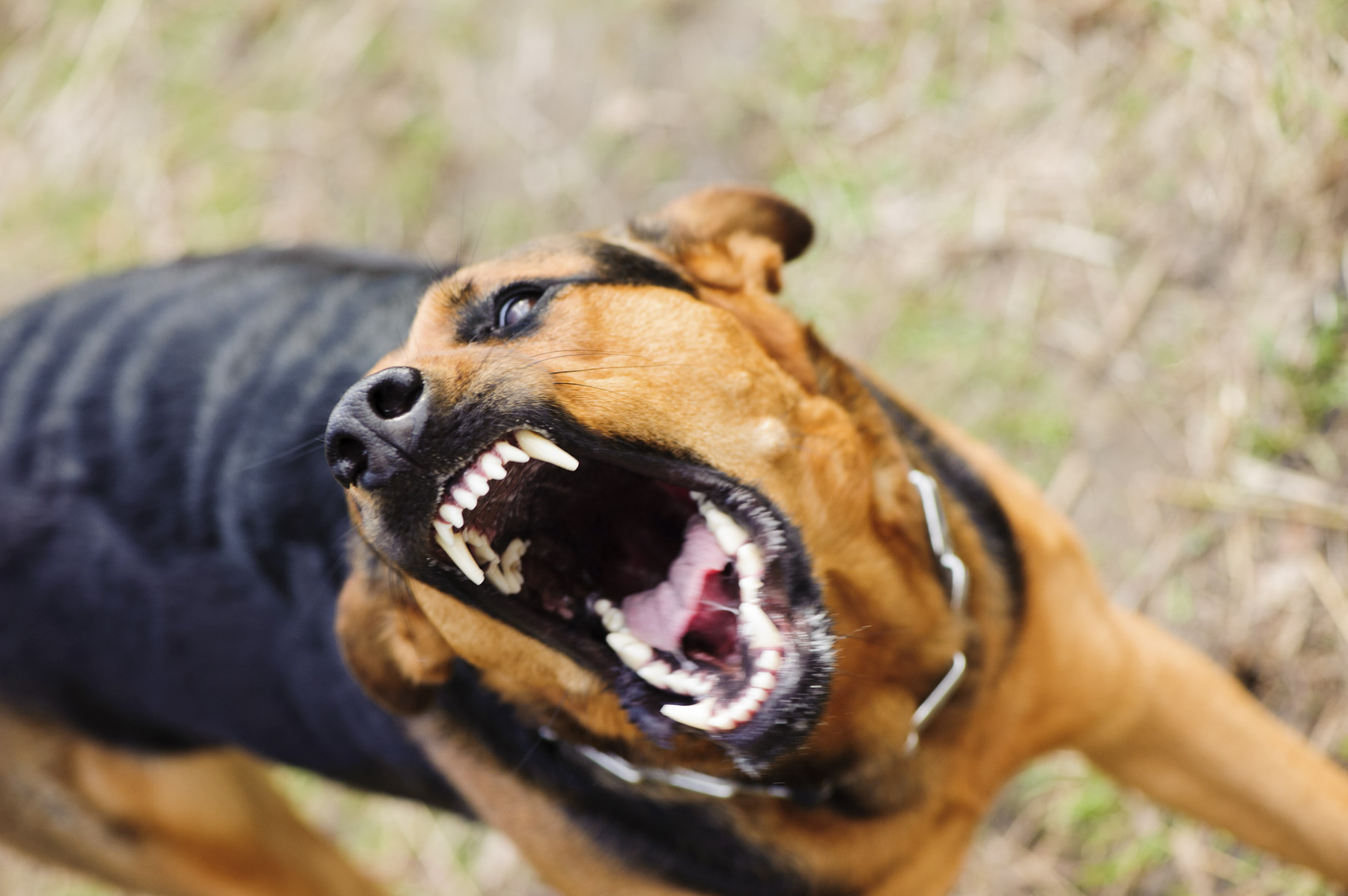

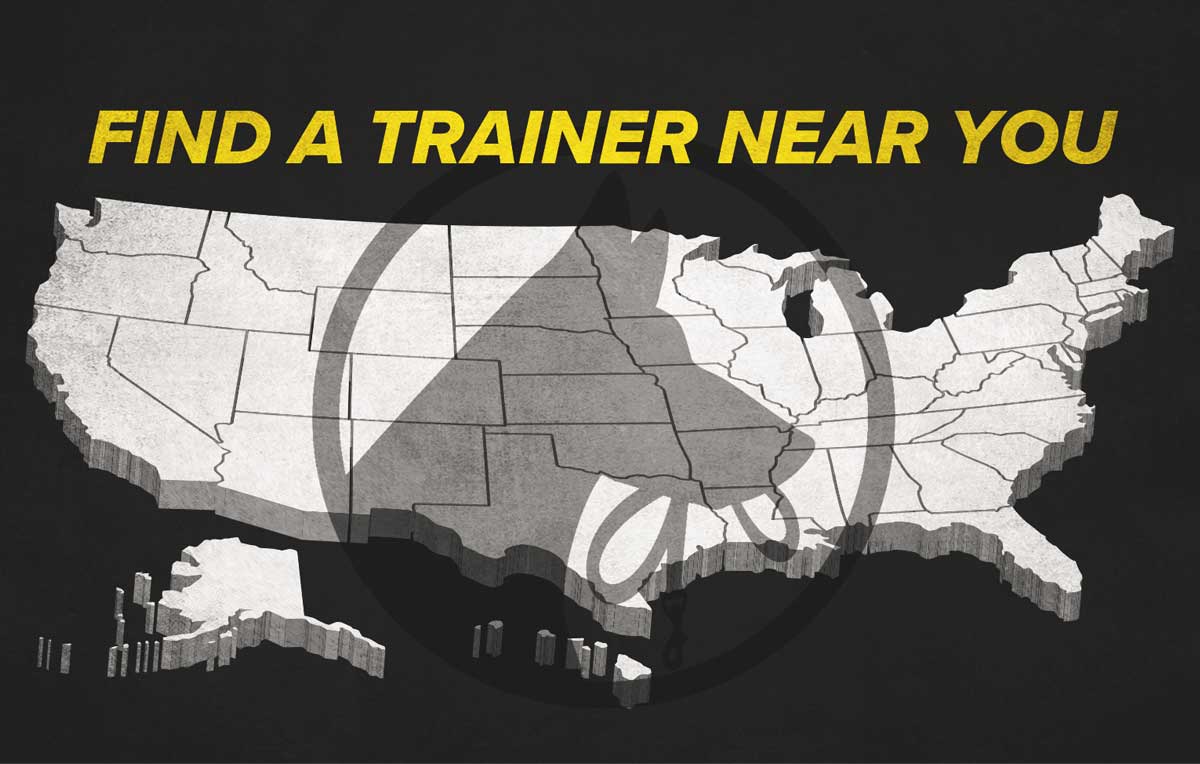
0 Comments